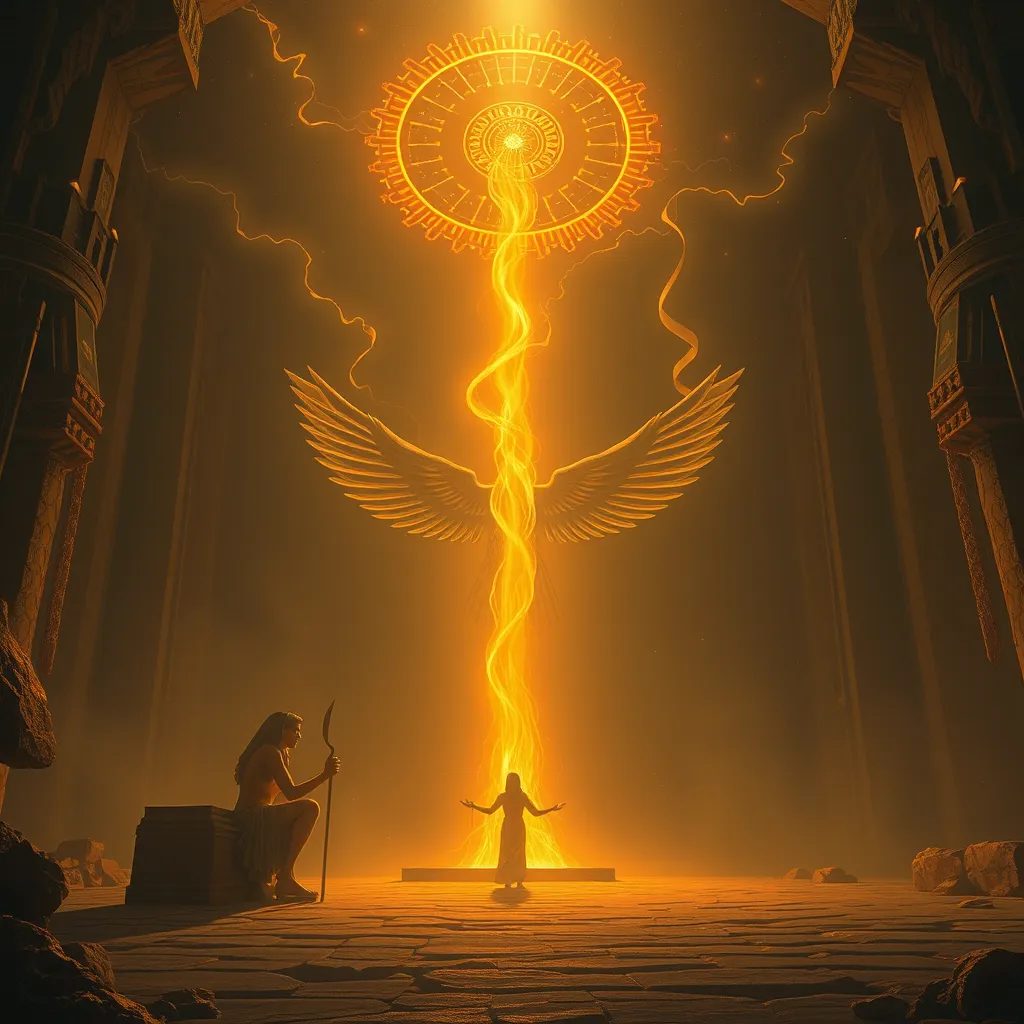The Duat: A Symphony of Spirits
I. Introduction
The Duat, often referred to as the Egyptian underworld, holds a significant place in the tapestry of ancient Egyptian mythology. It represents not just a physical space but a complex realm filled with spirits, deities, and trials that the deceased must navigate. In the context of the afterlife, the Duat is crucial for understanding the journey of the soul after death, marking a transition from the mortal world to an existence beyond. This article will explore the historical context, structure, key figures, and cultural impact of the Duat, ultimately revealing its profound significance in Egyptian beliefs and beyond.
II. Historical Context of the Duat
The origins of the Duat can be traced back to the earliest periods of ancient Egyptian civilization, where it was seen as a necessary aspect of the afterlife. As Egyptian beliefs evolved through different dynasties, the concept of the Duat transformed, reflecting changes in theology and practices surrounding death and the afterlife.
Key texts such as the Pyramid Texts and the Book of the Dead provide crucial insights into the Duat. These inscriptions detail not only the landscape of the Duat but also the rituals and spells that were believed to aid the deceased on their journey. Over time, the Duat became intricately connected with the gods and the moral implications of life and death.
III. The Structure of the Duat
The Duat is depicted as a vast and intricate realm, consisting of various regions and landscapes that the deceased must traverse. Each area within the Duat serves a purpose, whether it be for trial, judgment, or rest.
- The River of Night: This dark river is a central feature of the Duat, symbolizing the boundary between life and death. It is often depicted as a barrier that the deceased must cross, representing the challenges of transitioning from the earthly realm to the afterlife.
- The Fields of Iaru: Also known as the Field of Reeds, this paradise represents the ultimate goal for the soul, a place of eternal peace and fulfillment.
The journey through the Duat is essential, as it embodies the soul’s quest for immortality and reunion with the divine.
IV. Spirits and Deities of the Duat
Within the Duat, numerous gods and spirits play pivotal roles in guiding and judging souls. Among the most significant are:
- Osiris: The god of the afterlife and resurrection, Osiris rules over the Duat. He is the figure that embodies the process of rebirth, offering hope to the deceased for life beyond death.
- Anubis: The guardian of the dead, Anubis is depicted with a jackal’s head and is responsible for guiding souls through the Duat. He oversees the embalming process and protects the dead from malevolent spirits.
Other spirits inhabit the Duat as well, each fulfilling specific roles in the journey of the soul. One of the most critical aspects of this journey is the “weighing of the heart,” a ritual where the heart of the deceased is weighed against the feather of Ma’at, symbolizing truth and justice. This moment determines the fate of the soul, reflecting the moral conduct of the individual during their lifetime.
V. The Journey Through the Duat
The path through the Duat is fraught with trials and tribulations. The deceased must navigate various obstacles, including fierce creatures and tests of character. These challenges serve to assess the worthiness of the soul.
- Protective Spells: To aid in overcoming these trials, ancient Egyptians relied on protective spells and rituals inscribed on tomb walls and papyrus scrolls. These spells were believed to grant the deceased the necessary guidance and strength to face the challenges ahead.
- The Ultimate Goal: The ultimate aspiration for the soul is to reach the Field of Reeds, a serene and bountiful paradise where the soul can enjoy eternal life in peace.
VI. Symbolism and Imagery in the Duat
The Duat is rich with symbolism, which is often reflected in artistic representations found in tombs and ancient texts. These images convey deeper meanings about life, death, and the afterlife.
- The Serpent: Often depicted as a guardian or a challenge, the serpent represents chaos and the unknown. Its presence in the Duat serves as a reminder of the dangers that lurk in the transition between life and the afterlife.
- The Sun: The sun, often associated with the god Ra, symbolizes rebirth and the cyclical nature of life. Its journey across the sky is mirrored in the journey of the soul through the Duat.
These symbols reflect the ancient Egyptians’ beliefs about the interconnectedness of life and death, emphasizing the importance of moral conduct and the hope for resurrection.
VII. Cultural Impact and Legacy
The Duat’s influence extends beyond ancient Egyptian culture, impacting later religious and spiritual beliefs. Concepts of judgment, an afterlife, and moral conduct resonate in various spiritual traditions around the world.
In modern popular culture, the Duat has been referenced in literature, films, and television, often portrayed as a mystical realm. Works such as Rick Riordan’s “The Kane Chronicles” and various films draw upon the rich mythology surrounding the Duat, showcasing its enduring appeal.
Moreover, contemporary spirituality often revisits the themes of the Duat, emphasizing the journey of the soul and the quest for understanding the afterlife.
VIII. Conclusion
The Duat stands as a testament to the ancient Egyptians’ profound beliefs about the afterlife and the journey of the soul. Its rich symbolism, intricate structure, and the roles of various deities and spirits paint a complex picture of what lies beyond death. As humanity continues to ponder the mysteries of existence, the Duat remains a powerful symbol of the journey every soul must undertake, reflecting an enduring fascination with what lies beyond our mortal lives.




